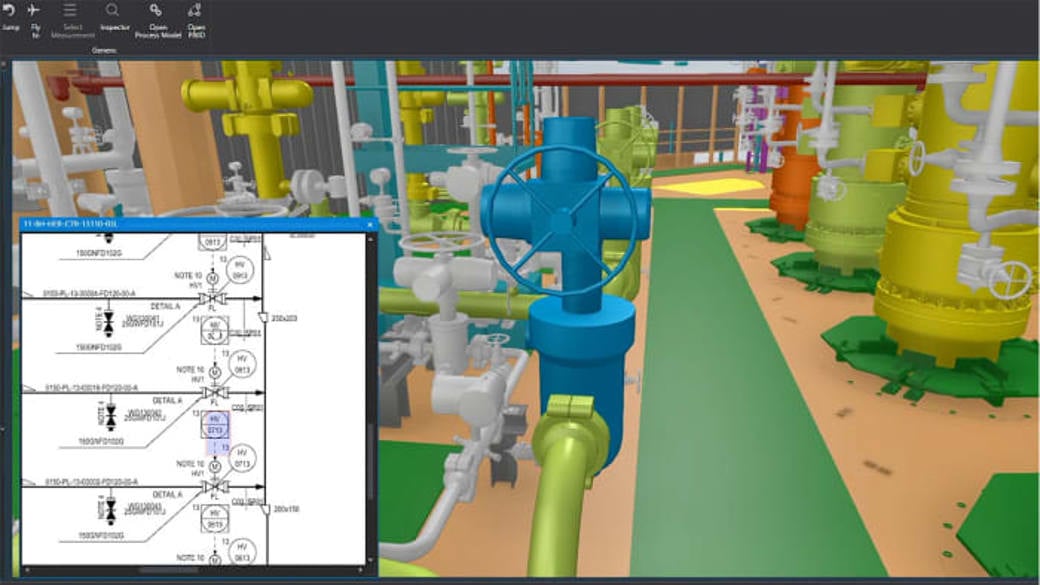
Equinor explores benefits of Kongsberg’s Digital Twin to enable unmanned offshore facilities
KONGSBERG’s cross-industry digital twin allows users to explore planned or existing assets in a virtual context, delivering an intimate understanding of operations, behavior, maintenance, costs, performance, and much more.
Available on any digital device – from pads to desktops or VR glasses – the twin recreates all the characteristics of real assets in an advanced, data-enriched 3D visualization. The benefits of the concept can be transformational, as energy major Equinor was keen to assess.
The project
Equinor wanted to test the feasibility of the digital twin to enable remote operations of unmanned facilities and achieve greater agility and efficiency in the field development process. To this end, KONGSBERG conducted a study between August 2017 and January 2018, focusing on the implementation of the concept for a potential remotely operated unmanned production platform (UPP).
The scope of the study encompassed the UPP’s topside systems, including hydrocarbon production, associated operation and maintenance, maritime operations and logistics operations, and considered all phases of asset lifecycle.
In addition, the project was tailored to determine how the use of digital twins could provide added value across Equinor’s entire portfolio of energy assets.
Approach
The digital twin, enabled by KONGSBERG’s Kognifai solution, gives the user the ability to see and understand the status of an asset, navigating and assessing it through a wealth of contextual information. This includes design and engineering data, simulated data, real-time data, maintenance data, logistics data, and financial data.
Its simple interface allows easy collaboration across disciplines and shared situational understanding. In the case of the UPP study, apps were built into the model to allow project stakeholders with no relevant system expertise to interact with the twin and extract maximum value. Accessibility was key to demonstrating value.
Findings
The top line financial benefits of utilizing the digital twin conceptwere compelling. Capex and Opex improvements were projected at up to 30 percent and 50 percent respectively, with production revenue enhancements of 10 percent over the lifetime of the facility.
Alongside the quantifiable benefits, the study also identified significant qualitative value. Use of the twin was found to improve design quality and processes, enhance cross-discipline collaboration, reduce project and operational risks, and diminish overall environmental footprint.
In terms of brownfield potential, the digital twin provided a strongcase for use across existing Equinor assets. Based on the assumption that the main benefits for such sites would be realized during the operational and maintenance phase, Equinor could achieve annual savings of 13–22 percent of Opex upon implementation.
Conclusion
The digital twin opens up a window of insight for the development and operation of planned and existing production assets. By giving users a shared understanding of asset status, it enhances decision making right through the platform lifecycle, from design to production, maintenance, and decommissioning.
Alongside the significant financial returns through Opex, Capex, andproduction improvements, the study found a broad range of benefitsincluding, but not restricted to:
Broad Range of Benefits
Field Development: improved quality of design, more efficient contracting and EPC management, more efficient project administration and execution.
Operational: shared situational awareness, increased production efficiency, efficient personnel utilization.
Maintenance: raining for operations and maintenance personnel, improved efficiency and quality of maintenance execution.
Logistics and maritime operations: creation of a collaborative arena, improved operational plans, better decision support, crisis-management training and handling.
HSE: verification of safe operations, increased marine safety, crew tracking, enhanced maintenance safety, optimal process design for production and safety.